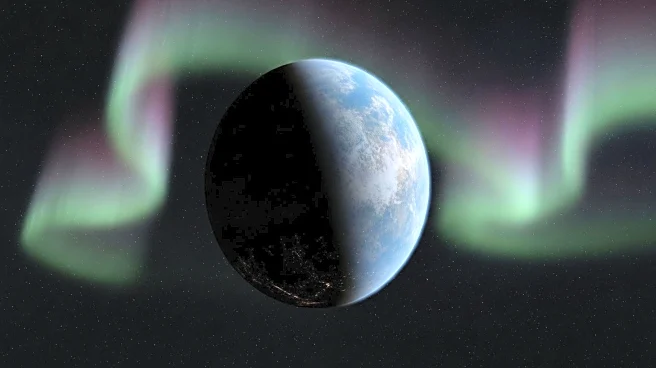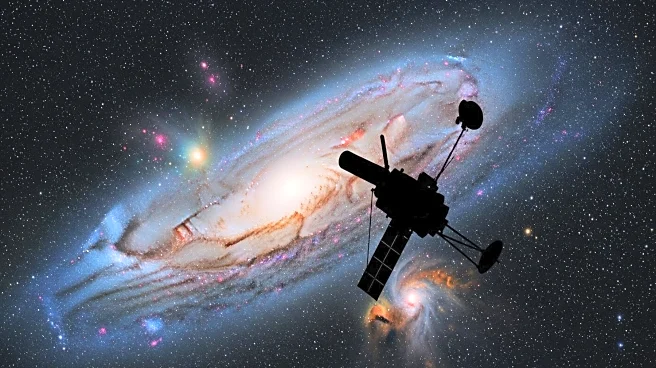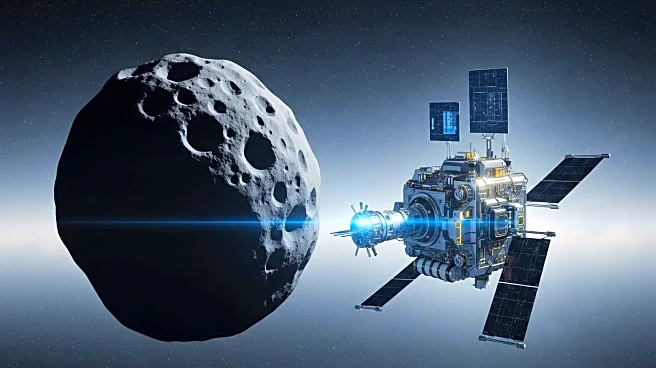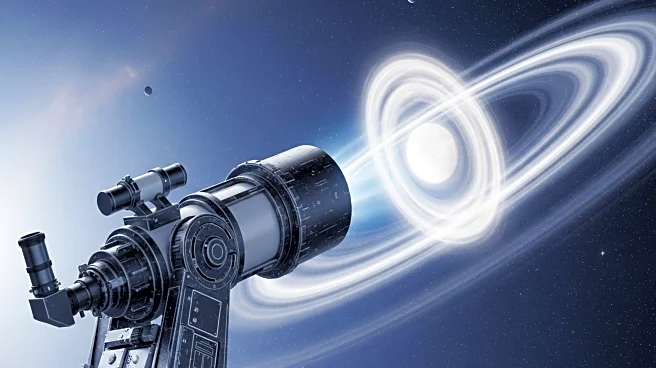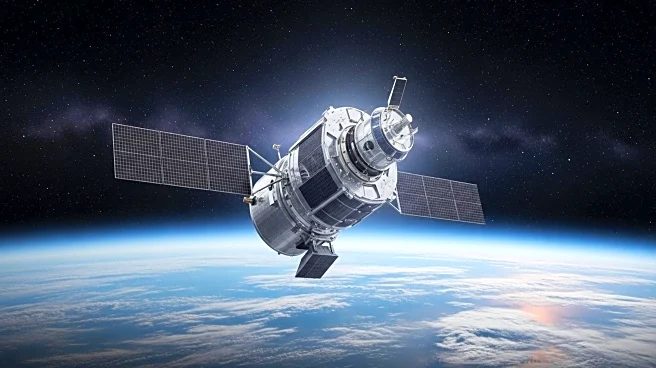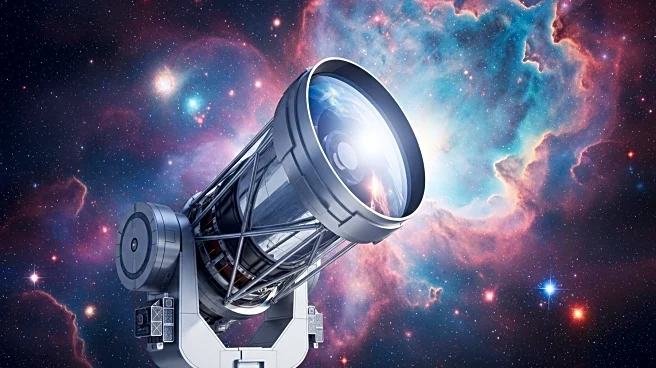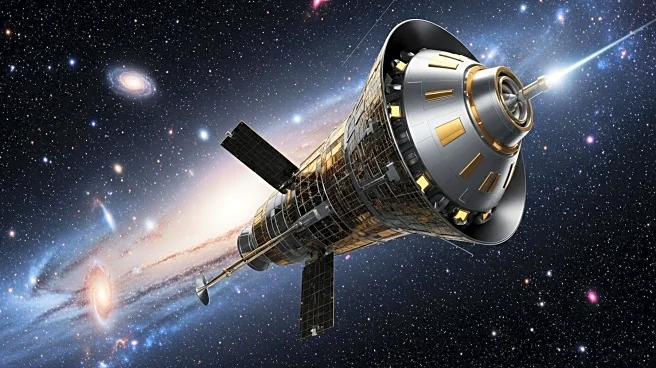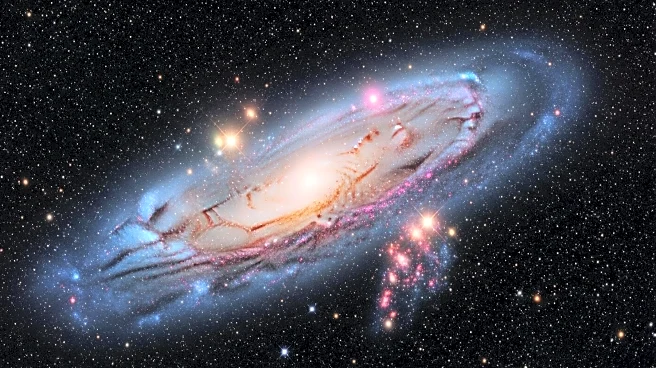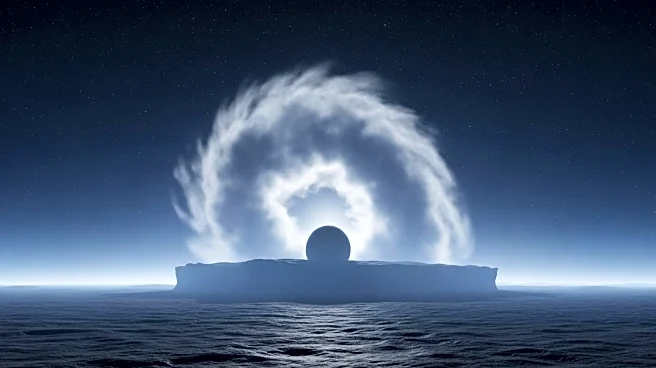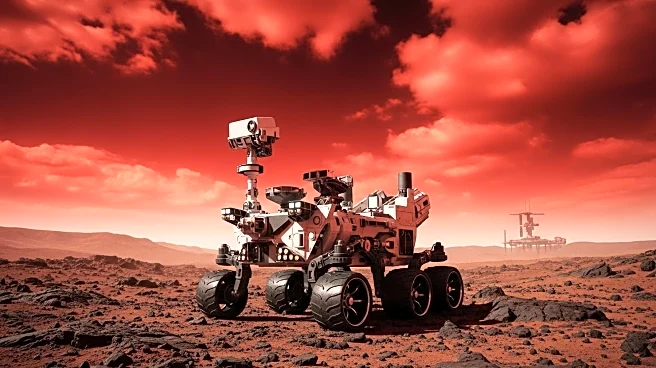What's Happening?
NASA's Exo-C mission is focused on obtaining high-contrast images of exoplanets and circumstellar dust disks around nearby stars. The mission aims to discover and characterize smaller, less massive planets and analyze the composition of their atmospheres through reflected light. This initiative seeks to improve the understanding of exoplanetary systems by providing detailed images that can constrain the mass and architecture of these systems. The mission will also study debris disks, which are indicative of ongoing collisions in belts of asteroidal and cometary bodies, and will use polarimetric imaging to measure dust properties. Exo-C's capabilities are expected to surpass those of the Hubble Space Telescope, allowing for the detection of fainter disks and providing insights into the atmospheric composition of exoplanets.
Why It's Important?
The Exo-C mission is significant as it enhances the ability to directly image exoplanets, which has traditionally been challenging due to the brightness of their host stars. By improving contrast and resolution, Exo-C will provide more accurate data on the atmospheric composition and potential habitability of exoplanets. This could lead to breakthroughs in understanding planet formation and the potential for life beyond Earth. The mission's findings may influence future space exploration strategies and the development of technologies for observing Earth-like planets. Additionally, the study of debris disks can offer insights into the dynamics of planetary systems and the role of unseen planets in shaping these disks.
What's Next?
The Exo-C mission will continue to refine its imaging techniques and expand its survey of exoplanetary systems. As the mission progresses, it is expected to provide more detailed images and data that could inform the design of future missions aimed at discovering Earth-like planets. The integration of advanced imaging technologies and wavefront control systems will be crucial in achieving the mission's objectives. Collaboration with other observatories and missions may enhance the scope and impact of Exo-C's findings.
Beyond the Headlines
The Exo-C mission's approach to imaging exoplanets could lead to new methodologies in astrophysics, particularly in the study of planetary atmospheres and debris disks. The mission's focus on high-contrast imaging may also drive advancements in optical technologies and wavefront control systems, which are essential for observing distant celestial objects. The data collected by Exo-C could contribute to the broader understanding of planetary system evolution and the conditions necessary for life.

